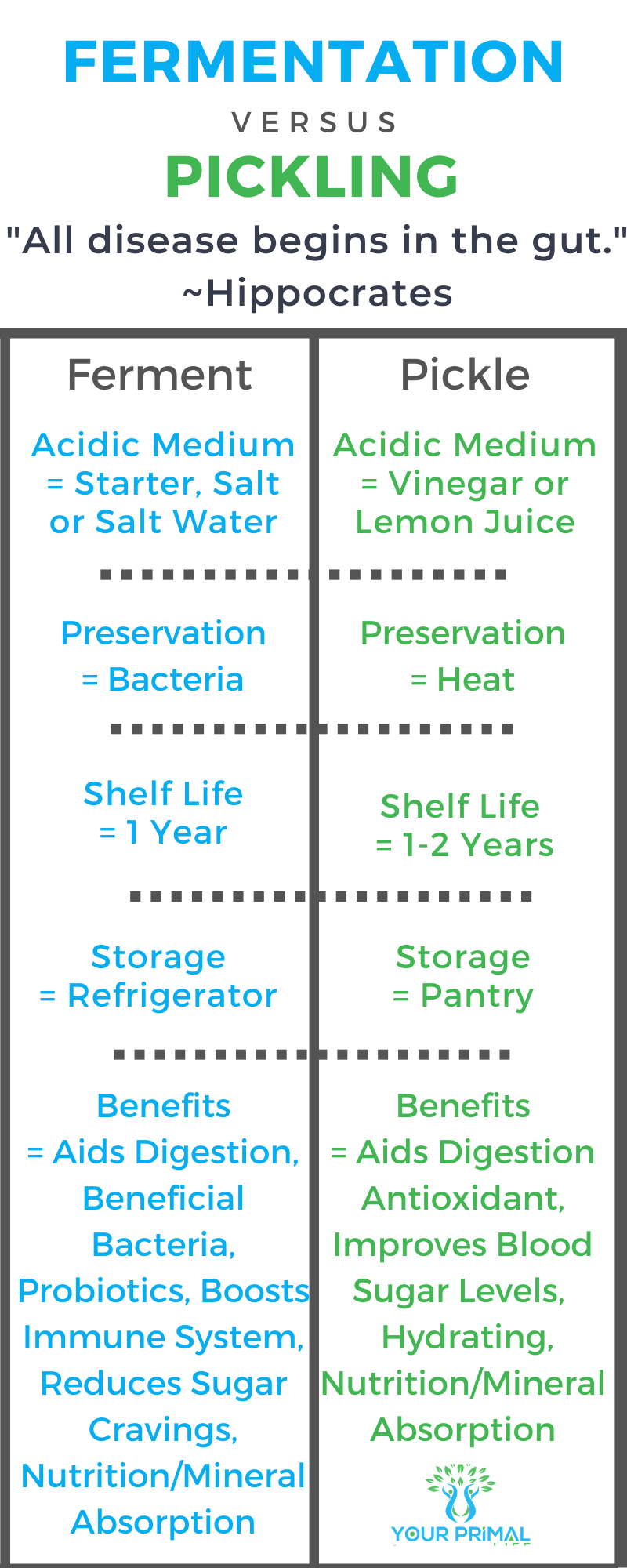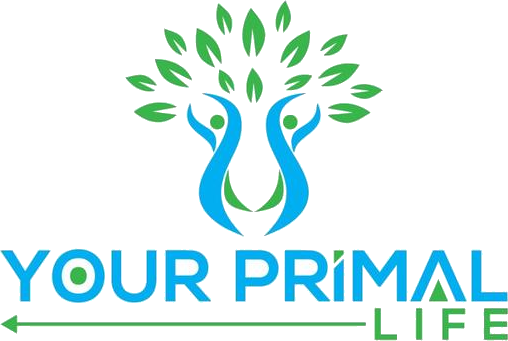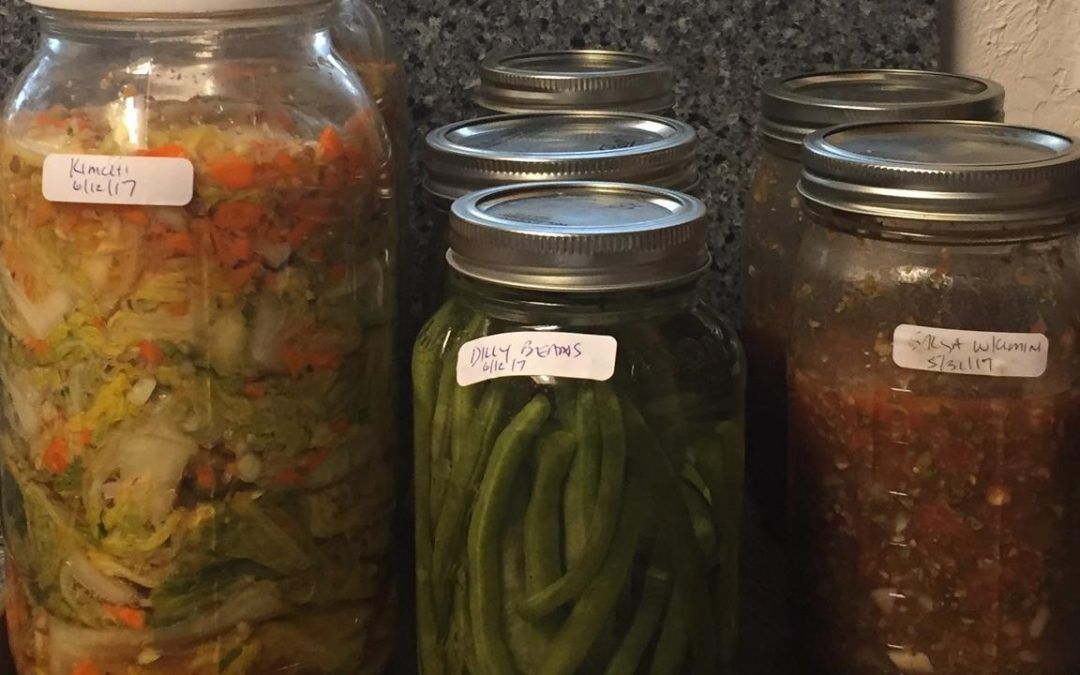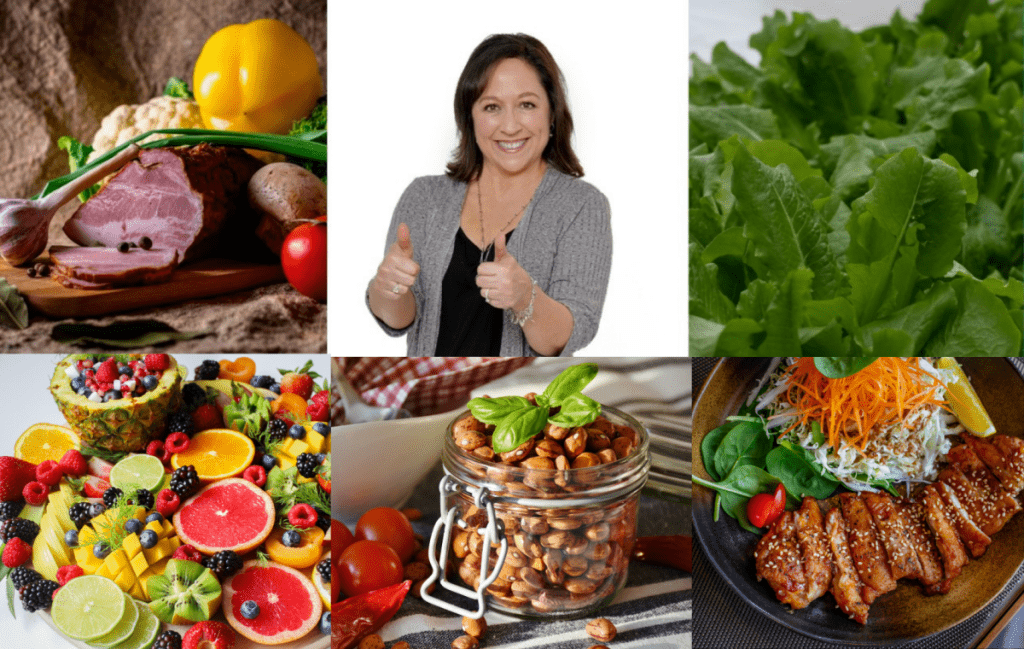All fermented foods are pickles, but not all pickled foods are ferments. What? This can be confusing because both are referred to as pickles. The term pickle refers to any fruit or vegetable that is preserved in an acidic medium; a salt brine for fermenting or an acid for pickling. Fermenting is simply a form of pickling, so they both really are pickles.
I love both, and I prepare both. My method choice is based on the goal of the product. However, I do choose one over the other more often. Here’s the low-down.
These food preservation techniques have stood the test of time. Humans have been eating pickles for many thousands of years. For added incentive, you can easily make them at home for a fraction of the cost of store-bought. Personally, I think homemade is better.
Read labels if purchasing from a store because most have added yellow dye. Why? I have no idea. It isn’t necessary because they are colorful and beautiful just as they are.
For fermenting, the brine can be a starter, salt or salt water and the food is preserved by bacteria. Ferments are stored under refrigeration once the fermentation process is complete and have up to 1-year shelf life. The beneficial bacteria and probiotics aid digestion, boost your immune system and reduce sugar cravings among many other benefits.
And the juice, oh my gosh! I didn’t fully understand the health benefits of the juice at the beginning of my fermenting journey until I attended a Fermentation Festival, which was tons of fun by the way. They were selling shots of ferment juice for $2. Yikes… I had been throwing mine away! I didn’t know any better at the time, but I sure do now. Have you bought probiotics lately?$? Drink the juice!
For pickling, the acid is typically vinegar or lemon juice and the food is preserved by heat. Pickles can be stored in a pantry and the shelf life is 1-2 years. They also aid digestion, are antioxidant, improve blood sugar levels and are hydrating due to the sodium and potassium content. Have you ever been told to drink pickle juice when you get muscle cramps? That’s why.
You can change the nutritional benefits based on the spices you use. Season for the flavor you desire or for a condition you may be trying to solve. As you should do with all food, rotate your spices, mix it up, experiment, and have fun. There are tons of recipes online, but I recommend getting a couple of good fermenting and pickling books. Make a priority list, you’re going to want to do them all!
Fermented foods are the healthier choice due to the beneficial bacteria that is produced through the lactic acid fermentation. They are great for your gut and are easier and faster to make. However, I will choose to pickle when cold storage or shelf life is a factor, or if I want to make gifts. People love homemade gifts, especially pickles. In the end, I do much more fermenting than pickling.
Fermented foods add a flavor punch to any meal. I try to eat some every day. It is recommended to eat at every meal, but I’m not to that point yet. If this is new for you, start slow so your gut can adjust. My favorites are cucumbers, okra, green beans, cranberries, carrots, cauliflower, broccoli, salsa, garlic, red onions, and radishes. On my list to try are Brussels sprouts, ketchup, eggs, watermelon rinds, blueberries, and apples. So many options… you better get started!

In Health,
Coach Nanette



